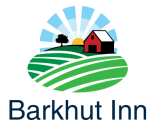
Secluded retreats are focusing on a whole new group of clients as the boundaries between work and leisure continue to blur.
In the name of productivity and creativity, digital nomads and entrepreneurs are escaping the hustle and bustle of cities to spend time in nature. Some resorts and hotels in the country are upgrading their services to meet this new clientele. However, many unique properties are geared exclusively towards the emerging demand.
The name workation retreats sometimes refers to the venues. They share several characteristics, including a relaxed rural location or semi-urban setting with hotel-style sleeping accommodations, coworking spaces, and a variety of activities such as cooking classes or business skills workshops that encourage guest interaction.
Lauro Ferroni is JLL’s global head of Hotels & Hospitality Research. She says, “This trend can also be seen as a part of the evolution in real estate, incorporating hospitality elements such as high quality accommodation and guest services while offering unique experience.” The human element, which brings people together in coworking areas but also allows for relaxation and building relationships, is important.
The communal atmosphere, such as the shared meals and the spacious coworking spaces that rival any city in size, is a big part of what makes the hotel so appealing. It offers the opportunity for collaboration and networking.
Connecting to the surrounding area — and each other
There are more and more retreats popping up in Europe and the U.S. They take inspiration from local co-living movements and offer accommodation and coworking spaces about an hour away from the city center.
Wolfhouse, a luxury oceanfront estate in Tenerife, offers co-living to teams. Nectar, a converted farm in a natural area outside of Barcelona, offers co-living for individuals and groups.
A project of great ambition is being developed in the Utah mountains across the Atlantic. Powder Mountain, a planned 500-house public town, is designed to host artists and entrepreneurs in an annual calendar of activities and events, including outdoor pursuits and brainstorming sessions.
These retreats are geared towards working professionals, but taking a break from the daily grind can be beneficial for everyone. Numerous scientific studies show that time spent in nature increases productivity, creativity, and memory and reduces stress. Ferroni says that rural settings allow people to get away from the daily grind. This environment can spark new ideas and enhance work products.
But a natural setting isn’t the only attraction. Ferroni says that it’s important to get people out of the office and involved in activities that teach new skills or improve existing ones. “A beautiful view is always appreciated, but places that are most popular are those with unique features that encourage people to think differently or push themselves.”
Cultural context is crucial. Not all activities are equal. Ferroni says that people want to experience new things and are willing to do so, but they must be authentic and relevant. It is important to offer a variety of choices so that guests can choose what they would like to do. Ferroni says that it’s important to give people a sense of autonomy and control, not just having everyone at the same time.
How to make a retreat for workstation work
Location is an important consideration for hotels and work retreats that are aiming to capture the new market. Ferroni says that these retreats need to either be connected to urban areas or use their remoteness to sell themselves. The remoteness of some ranches, such as those in Wyoming and Montana, is part of the appeal.
Due to their rural location, such retreats may present seasonal challenges. Ferroni says that this can be an opportunity as many businesses send their teams out of season while digital nomads are on the road all year round.
A strong digital connection is also essential. Ferroni says that while workers want to enjoy nature, they also don’t wish to be cut off from the rest of the world. It’s not enough to build the retreat and hope that people will show up. The new breed of workstation resorts is still in its infancy, and it is important to market and build a brand to reach their target audiences in the urban workforce as well as digital nomad communities.
Ferroni says that if you get the right retreats, they can flourish. He concludes that “it’s a growing trend, not only in terms of physical assets but also service and experience.” As technology advances, our work will become more dynamic and mobile. We can expect that the concept of a work retreat will diversify and reach the mainstream.





